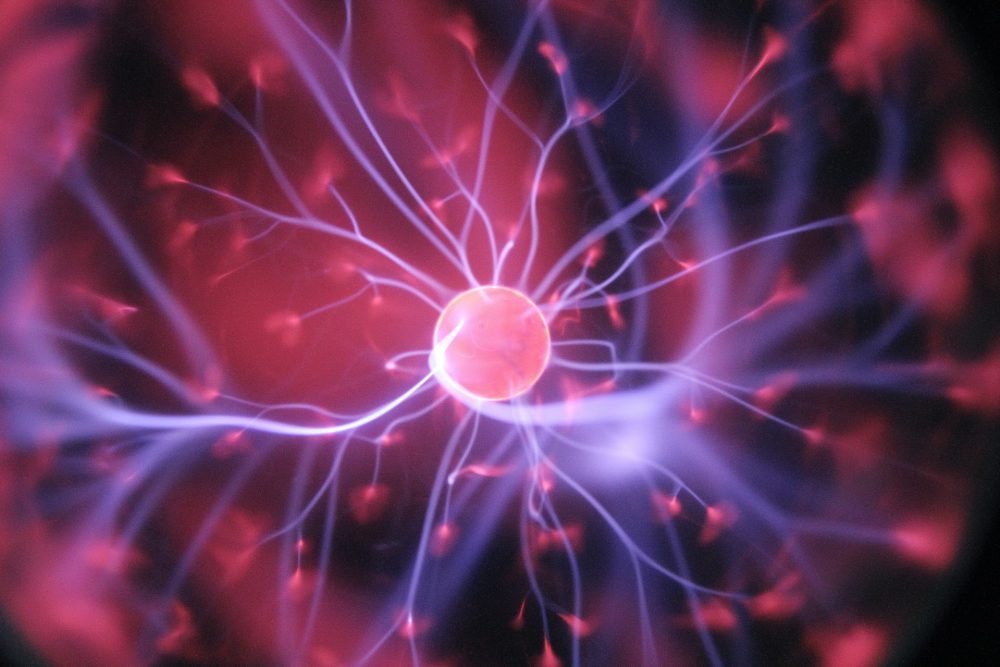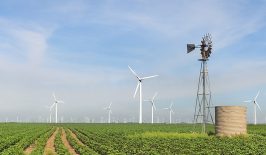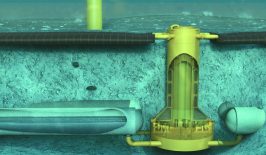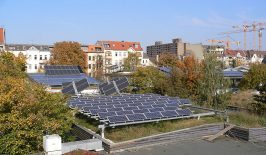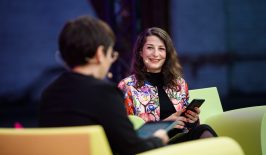Leading climate experts have been long calling for the energy industry to switch completely to renewable energies. In order not to lose sight of the 1.5 degree target, global CO2 emissions must be massively reduced – and the energy industry is the biggest lever to achieve this. Most CO2 emissions in Germany are currently attributable to this sector. So how can the transformation of our energy system succeed? And what role do digital technologies play in it? We asked Severin Beucker these questions as part of the dossier “Energy Transition – The Future is Networked“.
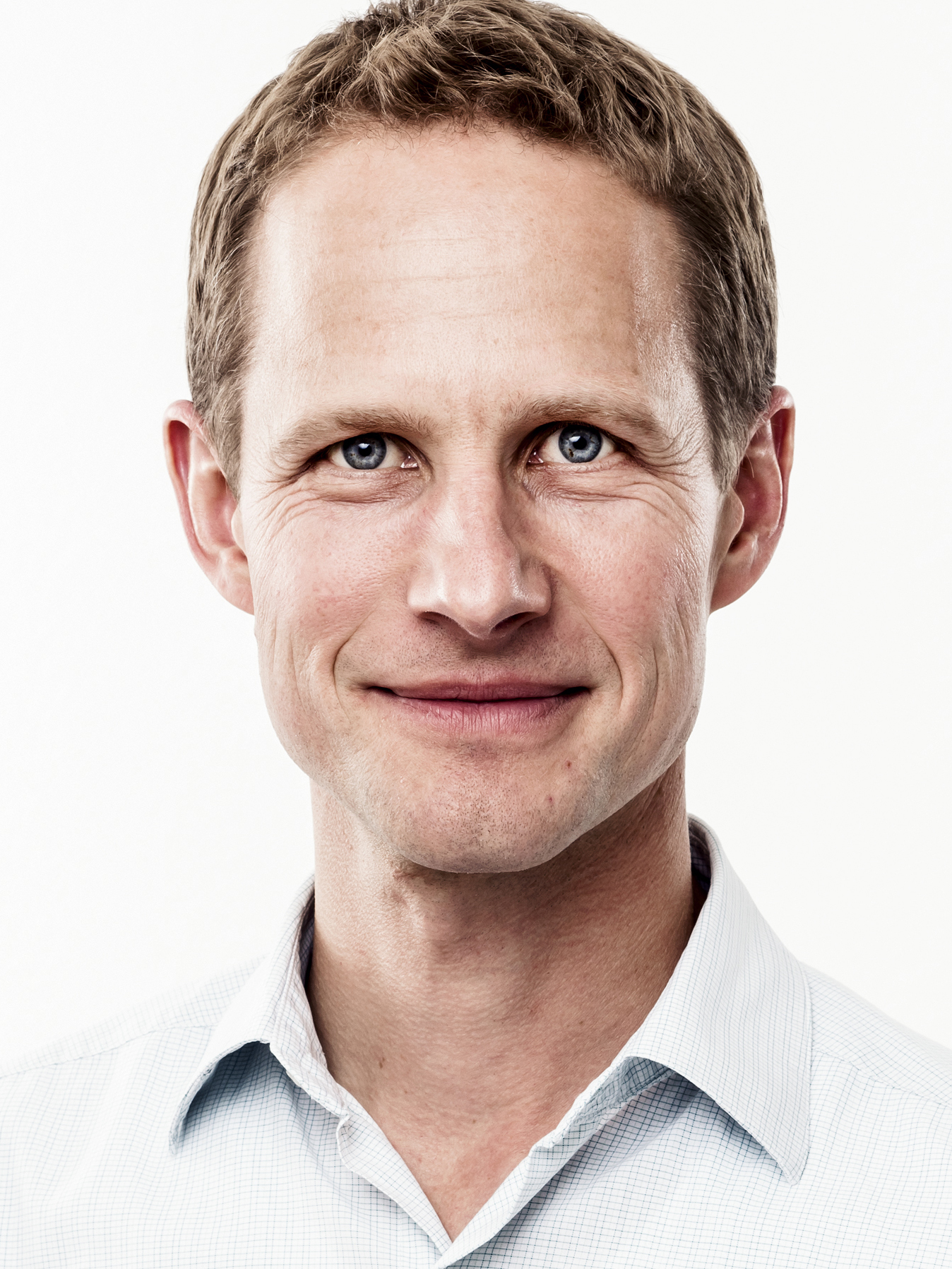
Severin Beucker is co-founder of the non-profit Borderstep Institute for Innovation and Sustainability. Since its foundation in 2005, Beucker and his colleagues have been conducting innovation research in the field of environmental and sustainable technologies with a focus on digitalisation. Beucker himself has specialised in energy systems, especially in the neighbourhood and building sector.
If we seriously want to come within reach of the global 1.5 degree target, then Germany must become climate neutral as quickly as possible. What are the biggest levers to achieve the goal?
Severin Beucker: Well, the easiest way to explain this is to look at where the most fossil energy is consumed. Greenhouse gases are produced by burning fossil fuels, i.e. oil, gas and coal. And in Germany we have several sectors that still consume an extremely large amount of fossil energy. Number one is definitely the energy industry, i.e. the generation of electricity from fossil fuels. Then comes industry, transport and the building sector as the top four in Germany.
Why are emissions in the energy industry still so high?
Until now, fossil energies were simply too cheap. That is changing radically because, of course, fossil sources have become incredibly expensive. And it is also not foreseeable that the price will fall again quickly. So the whole economic logic is shifting, and that is the strongest driving force. Once all the financial investors start calculating differently, building up other models, then we will very quickly see that the fossil fuel supply will be phased out and regenerative models will be given preference.
Today, 40 percent of electricity generation in Germany already comes from renewable energies. In the electricity sector, we are already approaching a very good figure, but the problem is that for many applications we still need primary energy, i.e. we burn gas, oil or coal directly. In the building sector, for example, we still burn a lot of natural gas to keep buildings warm, and we still need a lot of oil to transport goods and people around.
What do you think are the biggest hurdles on the way to 100 percent renewable electricity?
Well, part of the problem is that we are still thinking too small-scale when it comes to the energy transition, although it is actually this decentralisation that is the great advantage of renewable energies.
The energy transition is actually a paradigm shift in many respects. We are moving away from the old, centralised supply, where there were large, centralised power plants. If we are now moving towards a renewable supply, then it will inevitably also become more decentralised and interconnected. That doesn’t mean we all have to become self-sufficient. Self-sufficiency always comes at a very high price, because I need a large plant and large storage facilities on site. But we have to find a new balance between self-sufficiency and the energy system. And for that we actually need a completely different infrastructure, i.e. more smaller lines that interconnect individual producers and consumers in the neighbourhood. And that’s exactly what we’re experiencing right now, that the conversion of the electricity grid is very costly.
When you say that we need a networked energy system, then of course I immediately think of digitalisation.
Yes, that’s exactly where digitalisation comes into play. That is, at the moment when the generation of energy becomes more fluctuating and the consumption remains relatively the same or even increases. We expect electricity consumption to triple in the next 15 to 20 years, because mobility and other sectors will also be converted to electricity. If that is the case, then we have to come up with some kind of solution, because constant or increasing consumption and fluctuating generation are a problem.
And now different technologies come into play. One is storage, the other is intelligence. Either I have to store a lot of electricity so that there is always enough for the consumer. Or I can make consumption more flexible to a certain extent. This is a relatively new idea, i.e. that consumers no longer simply continue to consume in a linear fashion, but that they then consume more when there is more electricity available and less when less electricity is generated. That works in many cases, for example when I want to fill up an electric car or produce hot water in a house. I can link that to some extent to the times of day when more electricity is available via renewables and thus relieve the grid and the demand for electricity.
That is digitalisation, because all we need for that is finely distributed intelligence. I need to know when and how much energy is needed, as well as where and when a lot of energy is produced. And I have to coordinate this demand and production.
So digitalisation in the power grid primarily means permanently combining and controlling data?
Exactly. You could perhaps compare it to a chess computer that is always running in the background, thinking about what the next move is. What is likely to be needed by end customers, industry or electric vehicles within the next few hours? And what is being generated right now? Then I try to bring that into line as much as possible, and that is continuous optimisation. Digital systems are simply unbeatable in this respect, because a computer simply calculates quickly.
But we are still a long way from the large-scale networking of our energy system, aren’t we?
Absolutely. As far as the digitalisation of the entire energy system is concerned, we are still at the beginning. We are just starting to gradually install smart meters in the houses. This is a very important element because it means that we know in real time how much electricity is being consumed in households.
On the side of the actual energy networks themselves, digitalisation is also still in its infancy. We are gradually beginning to digitise the technical components – transformers, transformer stations, etc. – in order to know what power is available on one side and what demand is on the other.
One sector that will probably drive this forward relatively quickly is mobility. Here, the technology automatically comes into the house, because every electric car is ultimately also an intelligent end user with interfaces for the petrol pumps and billing systems.
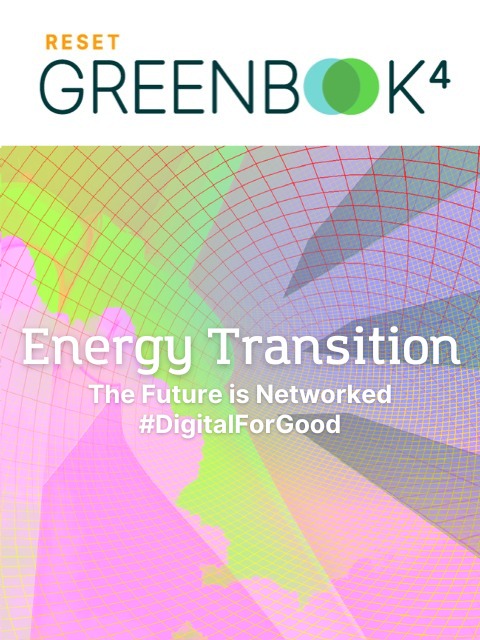
The 1.5 degree target is unattainable without a real transformation of our energy system. But how can it succeed? What are the energy sources of the future? What digital solutions are ready and where are innovations needed? And how can the transformation be driven forward?The RESET Greenbook “Energy Transition – The Future is Networked” presents digital, innovative solutions and sheds light on the background.
But in whose hands is the transformation of our energy system? Is it the task of the energy producers, or do we also need corresponding regulations?
I think both directions are important. The energy industry, i.e. the energy suppliers, will certainly push this forward because they have an interest in this information, in this data. But it remains a problem that definitely has to be regulated by politics and law – for one very simple reason: in order to make this whole system compatible, we have to speak a similar language. I have to be able to process the data that I generate in the household accordingly. And I must also subject this data to a certain level of protection. It is always data that says something about the households and the people. So I have to apply certain protection concepts and requirements to them.
And a very decisive problem with this new form of energy management and the energy system is the energy market. Currently, enough is always produced and it is simply always consumed. But we need a market that adapts more to these new requirements and that also passes on these price fluctuations at shorter intervals and makes them usable for the customer.
What could such a model look like?
In Berlin, we have shown in a project what can already function technically in buildings. In a neighbourhood in Prenzlauer Berg, we installed an intelligent energy management system and supplied 220 flats with heat and electricity via a small combined heat and power plant. The tenants there get hot water and electricity from the block-type thermal power station, which makes it possible to couple the control of the block-type thermal power station with the renewable energies available on the market. On days when there is an extremely high amount of wind energy, a price signal arrives in the neighbourhood and then a so-called power-to-heat unit kicks in there, which is ultimately a heating rod that is placed in a hot water tank and heats it, whereby the CHP unit then switches to a lower level and requires less fossil energy. Conversely, at times when there is little renewable energy in the grid and I have an energy surplus in the neighbourhood, i.e. electricity from the CHP unit, I can then feed more of it into the grid. And this is also possible with many other technologies. I could install a photovoltaic system on the roof and use the electricity from the roof to heat water or feed it into the grid when I don’t need it.
That is digitalisation, that is intelligence. These are small embedded PCs, small computers that sit inside the building and take over these calculations in real time. And that’s also a nice example of how resource-efficient it is. We really save fossil energy there. Of course, we also consume a certain amount of energy and resources to keep this technology running. But the share is vanishingly small compared to what we save in fossil energy. We save ten times more energy than we additionally consume there.
In this case, digitalisation saves more than it consumes in resources itself. But is that always the case?
That’s a fair question, because digitisation in itself is not sustainable. It is a technology that consumes more resources. I have to produce technology for it, send data back and forth and store it. That all consumes resources and energy. That’s why you have to look at the cases where digitalisation is used and then decide how many resources and energy are used for it and how much is saved on the other side. There are a number of positive examples where this works very well. And there are certainly also borderline cases where digitalisation is not necessary or must be applied differently. That’s why you always need guard rails for such a development and must not simply leave it to the wild.
What is not being considered enough in the energy transition?
For me, efficiency is still one of the biggest issues that is not being considered enough in the energy transition. We always think that we will solve the problems by making everything renewable. But we are starting from a much too high energy level. The space and possibilities for renewable energies are also very limited. If I have a photovoltaic system on the roof, I want to make the best possible use of it. I want to achieve as high a level of supply as possible in the neighbourhood, and I achieve that through efficiency.
How can the energy industry become more efficient?
There are still many ways to become more efficient in the energy industry. It’s also a question of efficient grid expansion. What I always want to achieve is to build my infrastructure, i.e. my lines, my transformers, my transformer station, in such a way that they supply an area well. But that’s not so easy. In Berlin, for example, I have the problem that there are many wind farms in the northwest and on days when an extremely large amount of energy is generated, the grid can no longer transport this energy. Then I need intelligence in the grid again. I need to know how great the load on the grid will be in order to decide whether I can let the wind farms continue to produce or whether I have to switch them off, which is what we are doing de facto. But it would be better to use it to produce green hydrogen on site, for example. That way the energy can be stored on site.
Amory Lovins, the founder of the Rocky Mountains Institute in the USA, coined the term negawatt in the 1990s. This means the watt that is not generated, and that is the very best word. Because what I don’t generate and don’t consume doesn’t need resources. We should simply learn to be much more careful with energy.
For example, I think the development in the area of mobility is getting out of hand. We have moved away from fossil fuels to electrical energy. But we have two, in my opinion, glaring undesirable developments. One is that the vehicles on the road are incredibly large and heavy. We have to move this mass, and that inevitably always consumes energy. And if we continue to assume a linear increase in vehicle fleets, this will lead us down a path that is not sustainable because, as I said, we cannot provide so much renewable energy.
So how do we achieve CO2 neutrality in the energy industry?
In order to achieve carbon neutrality in the energy industry and in the major sectors, we have to quickly become more efficient. We have to expand renewable energies very strongly. And we have to implement this quickly now. We have five to 10 years to make really big progress. After that it will be critical.
Are we technologically ready for that?
The technology is so far that we can use it now and implement it. It will still improve, no doubt. But that’s not what matters. Where we still need more intelligent concepts is in storage. We still need to find scalable solutions that can be used and produced from smaller to larger units.
So what does it take to accelerate the energy transition?
I believe that many things would accelerate if there were other incentives on the market. For example, if my flexible behaviour as a consumer were rewarded, because I am willing to consume more energy when it is cheap and vice versa. If I get a price incentive for this, then a lot of things will start to develop by themselves. But at the moment it’s very difficult because I buy my electricity from a fixed electricity supplier and these contracts always run for at least a year and I have no choice between high and low tariffs. We need to radically simplify that and the policy needs to create the framework for that.
We also need more work in the area of digitalisation, intelligence. This area is still very fragmented. We always have such small sectors that are digitalising, but we don’t yet have an end-to-end exchange across the energy system. And we are currently still thinking in terms of sectors, i.e. “buildings”, “industry”, “mobility”. But we have to think of these problems as systems. This can be demonstrated very well in buildings and neighbourhoods. Not only heat and power supply are needed, but also hot water supply and mobility.
There are many issues that I have to consider together more and more. And that also has a lot to do with the ecosystem concept. Ecosystems are always stable when they can be supplied from different sources and when there are niches, so to speak, for the organisms in ecosystems. And in a similar way, you have to transfer this back to the planning idea. The systems have to become resilient and fail-safe again.
Where do we go from here; can we succeed in transforming our energy system in the next few years?
I believe that we can achieve the goals set by the Federal Government. However, I am still sceptical about the subsidies for energy-intensive industries. There are industries that are suffering enormously from the current energy price. But that shouldn’t take them out of the obligation to become more efficient and to push ahead with the change.
In the final phase of the energy transition, i.e. the step from 70 per cent renewable energies in the total supply to 100 percent, that will be very complicated again. In industry, there are applications that are very energy-intensive and require fossil energies to a certain extent. And replacing them with other energy sources and raw materials will be a major task. But I am firmly convinced that we can succeed if we understand the development not as a linear development of exclusively more economic growth and more energy consumption, but also as a levelling out to a new, more compatible and more sustainable level of energy and resource use.
